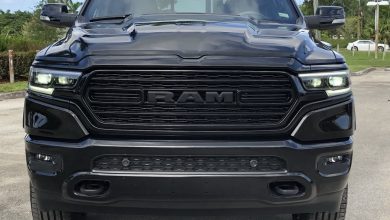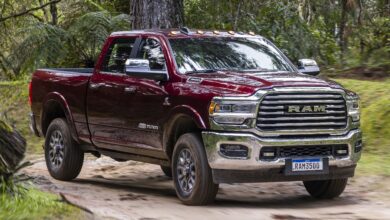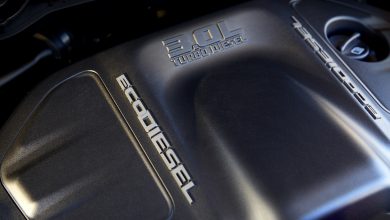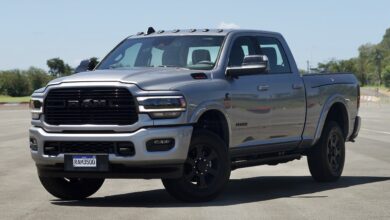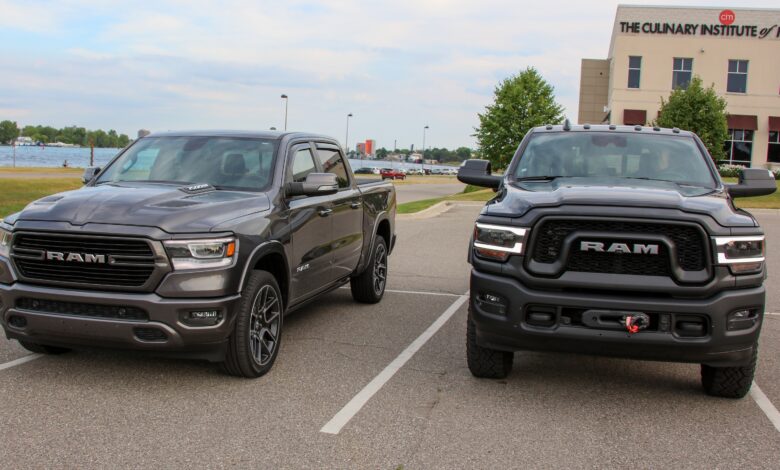
The Ram Truck brand has been on a roll for the past two years taking the title as the second best-selling nameplate in the full-size pickup segment and winning numerous awards including back-to-back Motor Trend Truck of the Year titles. The brand’s lineup consists of the all-new Ram 1500 (which debuted in 2018 as a 2019 model year vehicle) which revolutionized the full-size segment, the highly revised Ram Heavy Duty lineup (Ram’s powerhouse truck lineup), and the Ram 1500 Classic (the aged, but value-based offering) have allowed the brand to propel itself lightyears ahead of where the brand stood a decade ago.
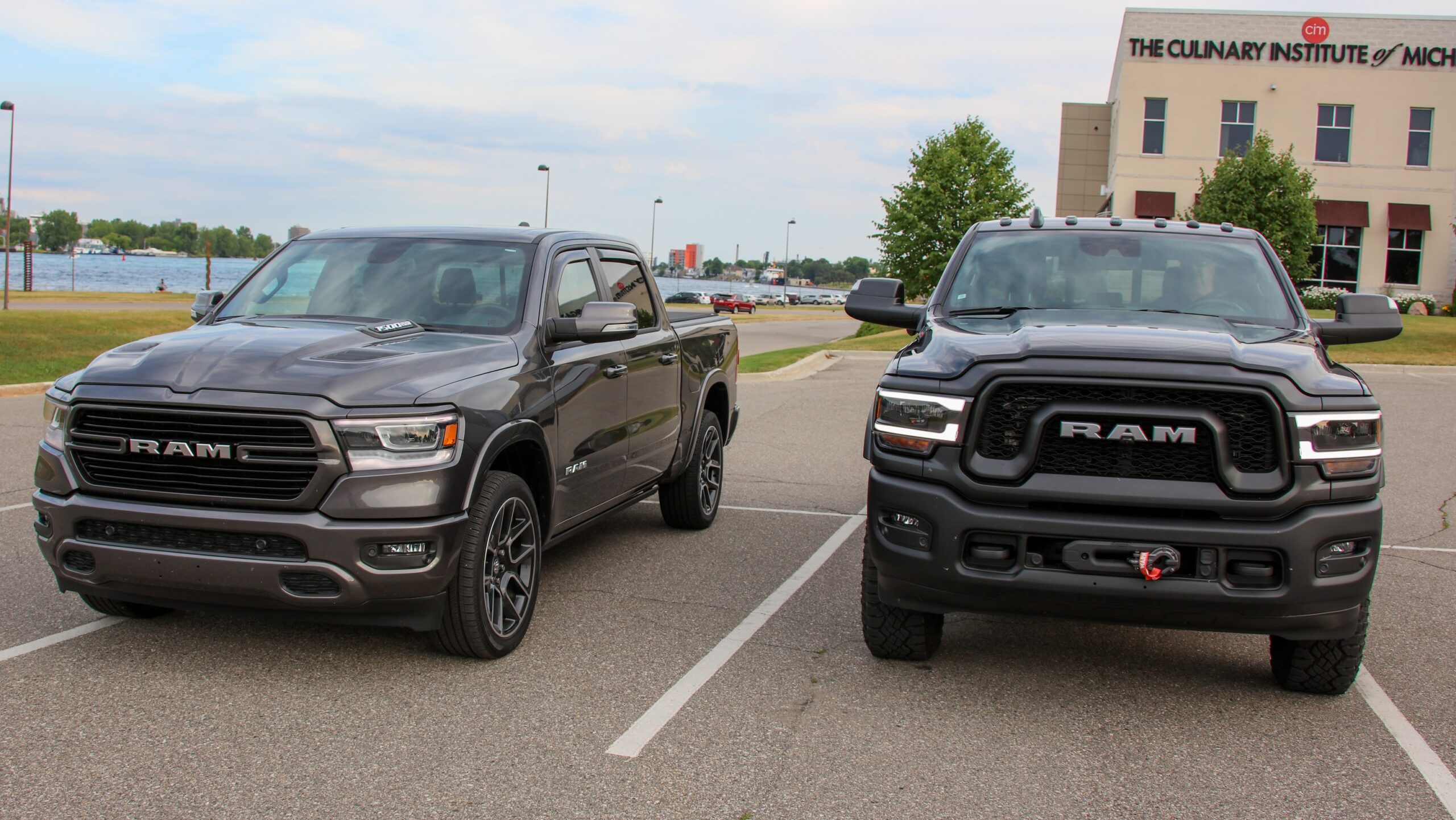
While we have spent a lot of time behind the wheel of most of the new Ram 1500 and revised Heavy Duty lineup, we got to spend a lot of time recently jumping back and forth between our long-term 2019 Ram 1500 Laramie Sport Crew Cab 4×4 and our 2020 Ram 2500 Power Wagon tester that Ram sent us a couple of weeks ago and there couldn’t be a pair of trucks so different from one another.
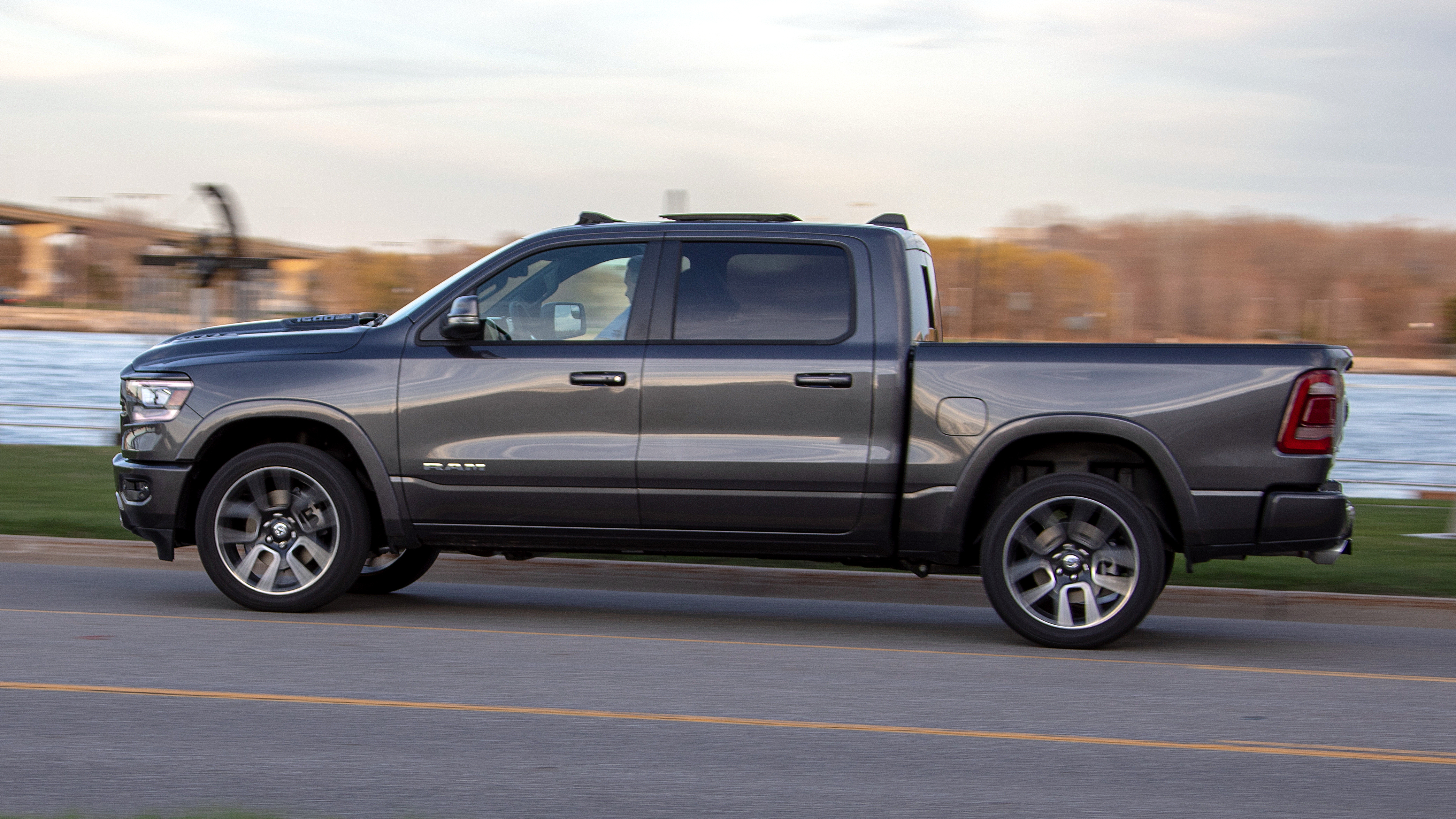
While a lot of people have called the revised Heavy Duty lineup, a fifth-generation Ram, is simply is NOT! The Heavy Duty lineup shares virtually nothing with the all-new Ram 1500. Both trucks share completely different exteriors, with different body panels, cabs, grilles, headlamps, tail lamps, boxes, there isn’t one exterior feature shared between the two, despite the bumpers carrying similar design themes. The new Ram 1500 is more sculpted than the fourth-generation-based Ram Heavy Duty, however, the Heavy Duty looks more aggressive thanks to more “big-rig” themed styling that is more known from past generations of Ram Trucks and is even more noticeable on this Power Wagon model.

While the box is more sculpted on the Ram 1500, the fourth-generation Heavy Duty box is more slab-sided. This can be a plus for those who want the optional RamBox cargo management system on their Heavy Duty pickups since the Heavy Duty models with the RamBox option looks like it blends better on the fourth-generation box when you compare it to how it looks on the sculpted fifth-generation box.
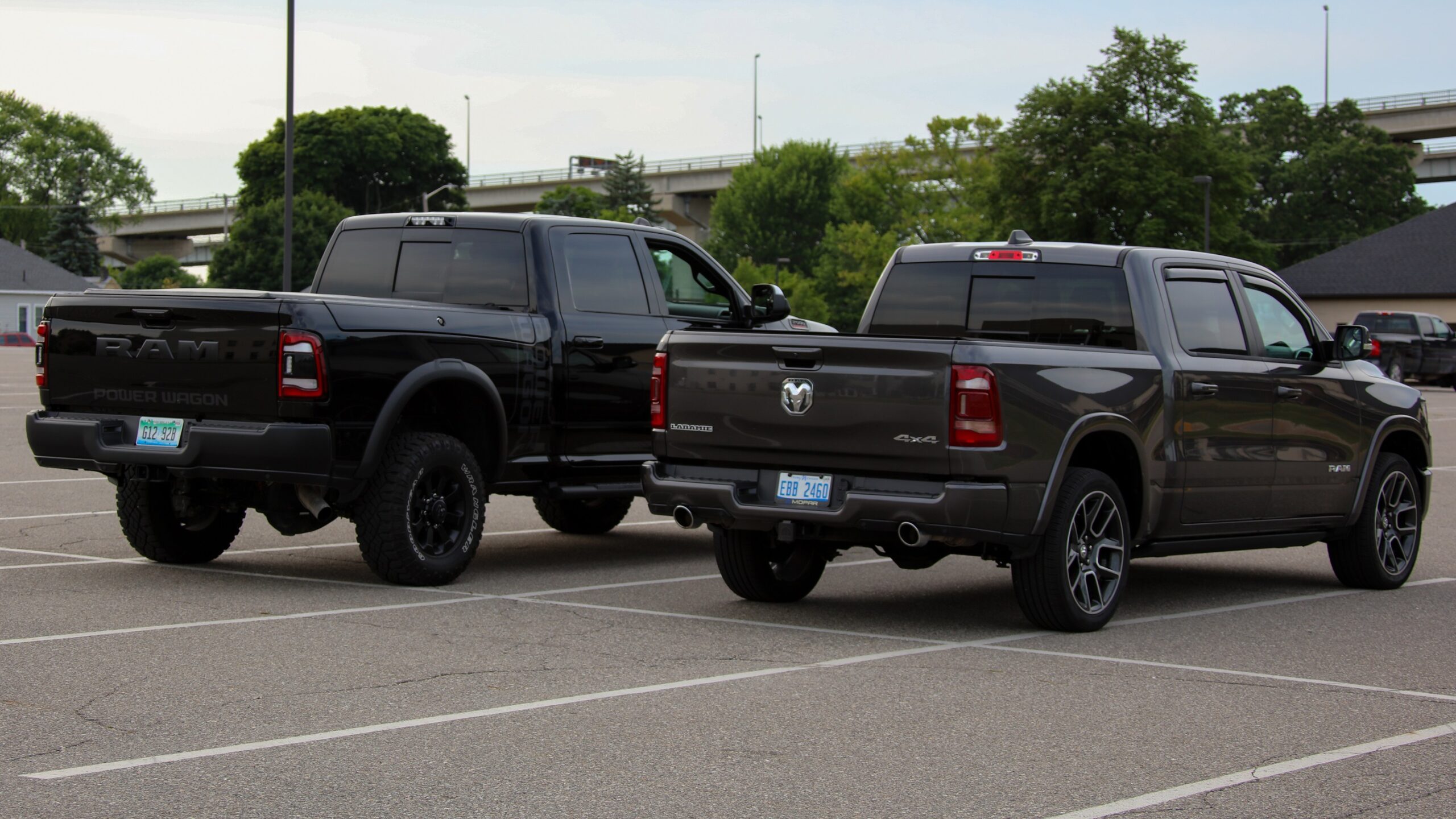
Taillights might share the same design elements between the two trucks, however, the tail lamps on the fifth-generation truck are taller. While the Heavy Duty tail lamps might be smaller in shape, the updated tailgate design on the Heavy Duty still looks more aggressive with a built-in spoiler that leans back more than the fifth-generation one. However, the stamped lines on the tailgate are more prominent on the fifth-generation truck. One thing that is a disappointment on the fourth-generation box is the absence of a capless fuel filler, like the fifth-generation model. This means when you go to the pump, you have to hang the attached fuel cap over the fuel door in order not to have the cap lay against your truck’s paint.
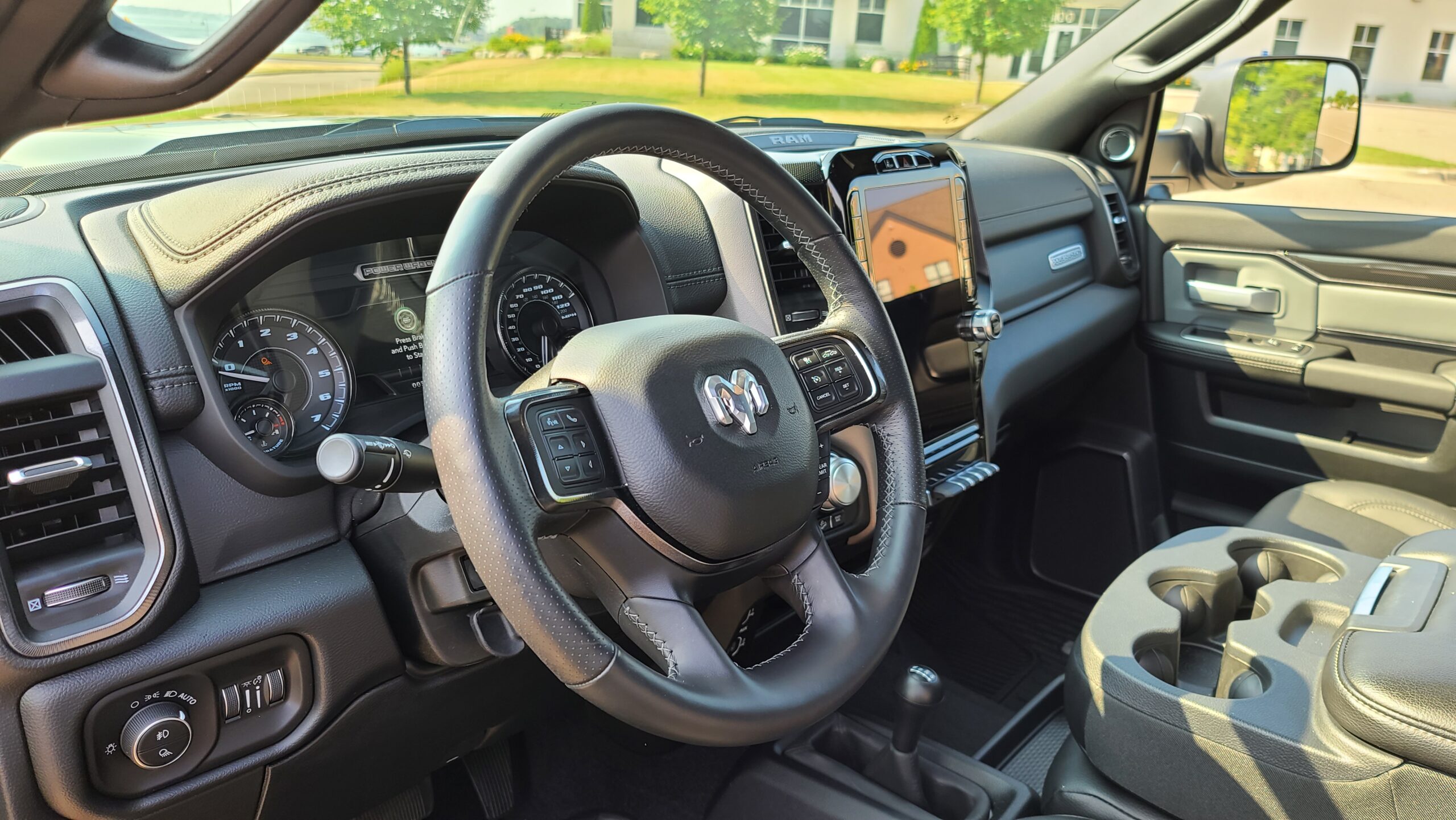
When it comes to the Cab configuration of the trucks, they couldn’t be more different. The fourth-generation-based Heavy Duty offers three configurations with Regular, Crew, and Mega Cab offerings. The fifth-generation pickups are only offered in Quad Cab and Crew Cab models. When you compare Crew Cab models back-to-back, the fifth-generation is night and day better than the one found in the fourth-generation Heavy Duty for several reasons.
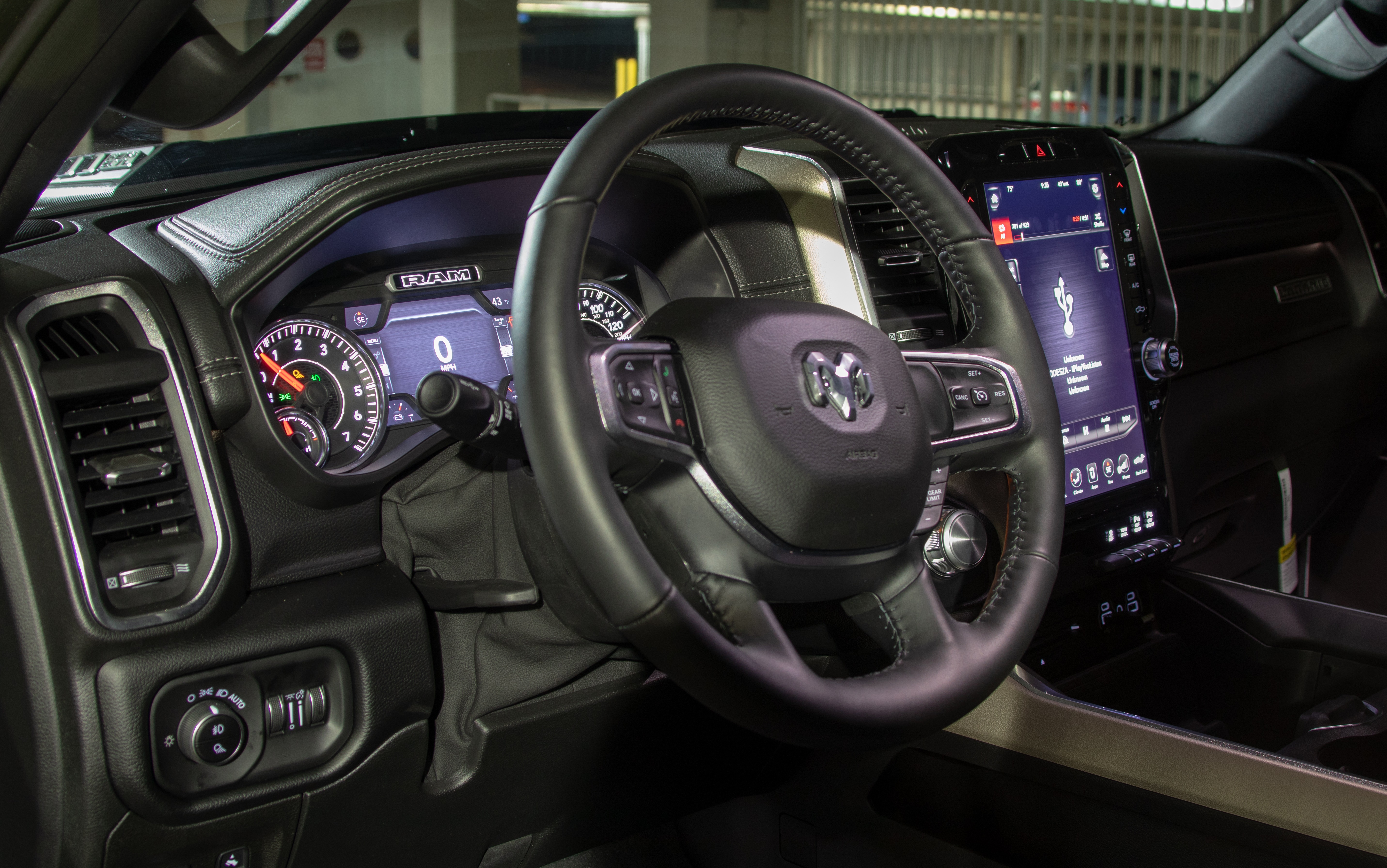
Size matters and the fifth-generation Ram 1500 has a Crew Cab that is 4-inches longer than the fourth-generation Crew Cab. This means both the front and rear doors are slightly wider to help ease access into the cab. The added length also comes into play for backseat passengers on the fifth-generation trucks, since they have the ability to recline the rear seats a full 8-degrees. You have to step up to the much larger Mega Cab to have the ability to recline the rear seats in a Heavy Duty. There is also a flat rear floor in the fifth-generation Ram 1500 Crew Cab, while the Heavy Duty Crew Cab still has a low hump in the middle of the rear floor area.
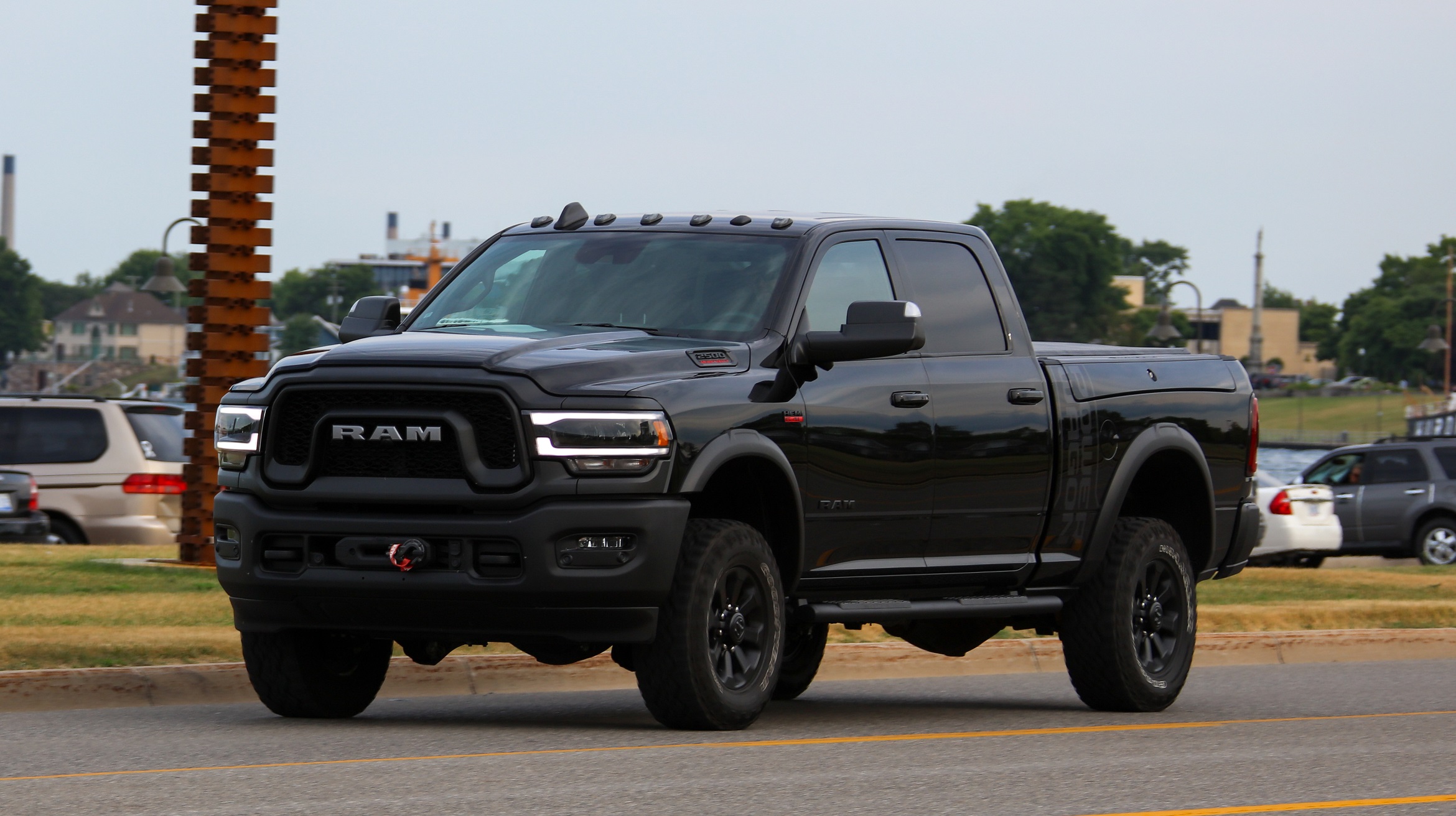
When it comes to the Ram Heavy Duty’s Crew Cab the Ram design team, did a good job updating the existing cabin to make it look new. The door panels have been redesigned, but even though it uses the same window switches as the fifth-generation doors, the memory seat buttons are a carryover from the 2018 model year and look nothing like the bigger more finished controls found on the fifth-generation trucks. The seats may share the same patterns as their fifth-generation half-ton brother but are the same frames as they were before the update. So when you compare the two, the fourth-generation-based seat frames have more side bolstering which may be good for small people, but the fifth-generation seats are flatter and are more comfortable for larger frame people.

While the two trucks share the same dash, something the design team had to incorporate into the older cab with a totally different mounting system, it looks at home in the fourth-generation cabin and makes it look more modern when compared to the dash in the fourth-generation Ram 1500 Classic pickups. However, there are a few changes that if you jump over from a Ram 1500, you will notice immediately. The first being the steering wheel controls. While the fifth-generation Ram 1500 features steering wheel controls that are shared with the more modern FCA portfolio, the fourth-generation sticks to the same buttons it had before the update, which dates the steering wheel a bit. The next is the location of the power-adjustable pedals button. While it is located around your left knee on the fifth-generation trucks, the fourth-generation trucks stick the button on the base of the steering column which can be hard to locate when your driving.
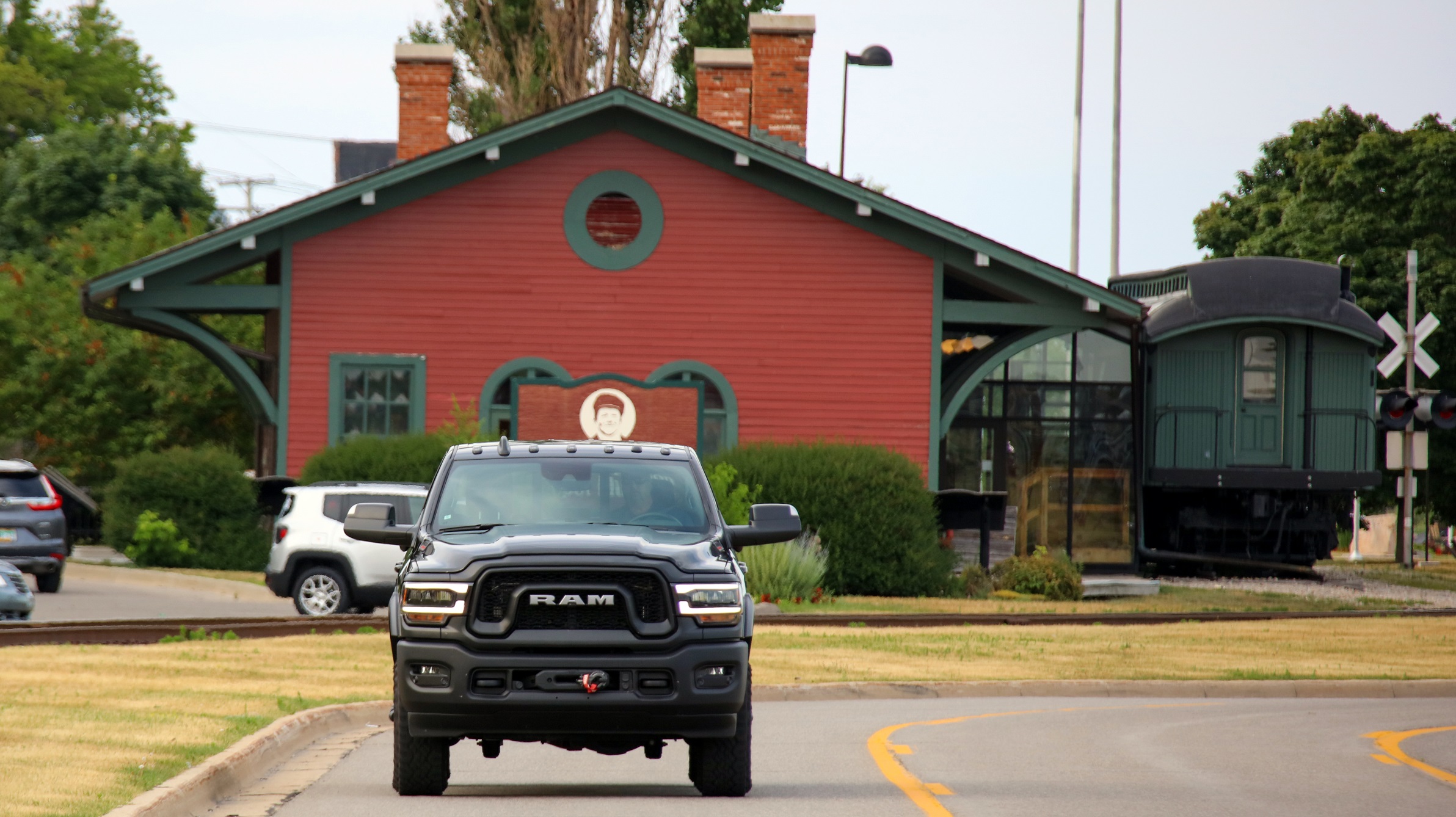
A few other things separate the two cabins. While the fifth-generation trucks have electronic parking brakes, which are located again near the driver’s left knee, the Heavy Duty trucks have a mechanical system that has a pedal located over the driver’s “dead pedal” area. But the biggest disappointment with the fourth-generation Ram Heavy Duty cab in the lack of a tilt-and-telescoping steering column, that is available in the fifth-generation cabin. The fourth-generation steering column tilts but does not telescope.
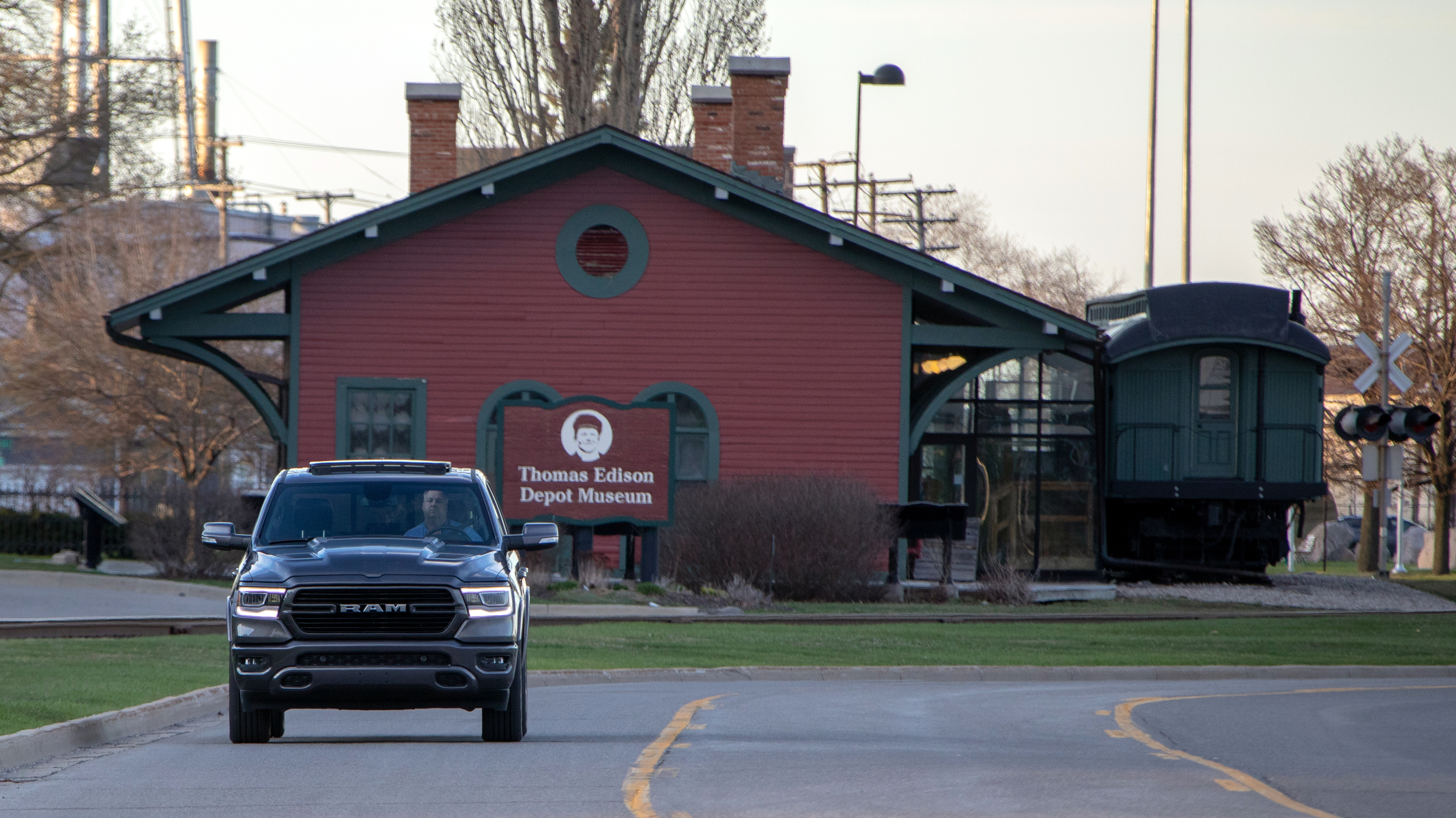
Because of the fourth-generation cabin structural restrictions, there is also not an option for the awesome 33.3-inch by 43.4-inch panoramic sunroof found on the fifth-generation Crew Cab. The panoramic sunroof gives passengers a spectacular 10 square feet of sky view and additional natural light. The fourth-generation cabin does offer a power sunroof, but it just a standard unit based over the front row of seats.
While you might think that we are picking apart the fourth-generation Heavy Duty, there are several things that that truck does better when compared to the fifth-generation Ram.
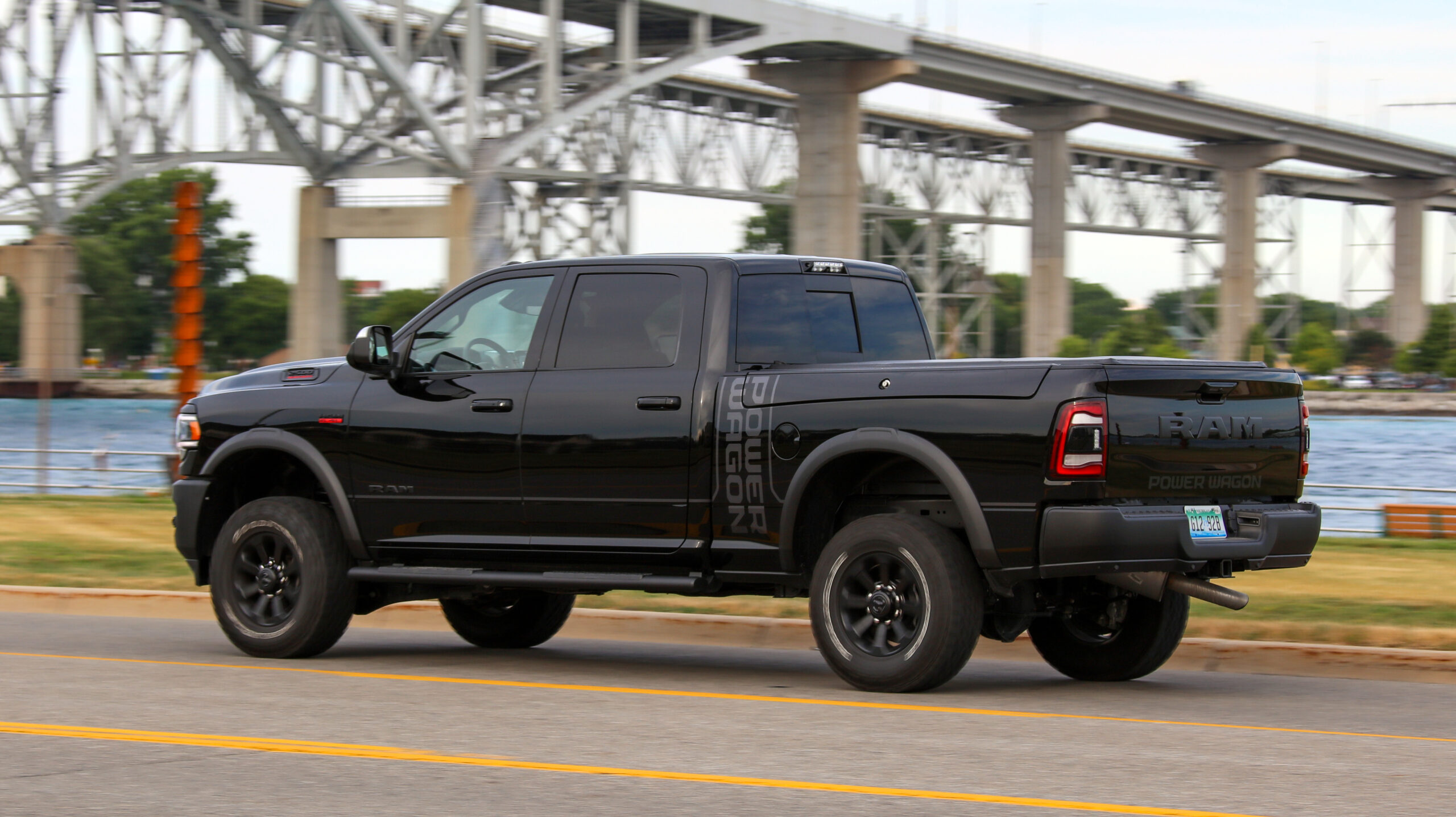
The first thing is the bed height. The fourth-generation box is 1.5-inches lower than the fifth-generation box. Ram added the height to allow the beltline of the body to blend the styling of the fifth-generation pickup more and giving it a consistent horizontal profile. The extra height, however, adds a lot more of a struggle on the half-tons when reaching over the box and when the truck sits as tall as the Power Wagon, it would be virtually impossible to grab anything on a fifth-generation Heavy Duty truck from over the side without a step to climb up on.
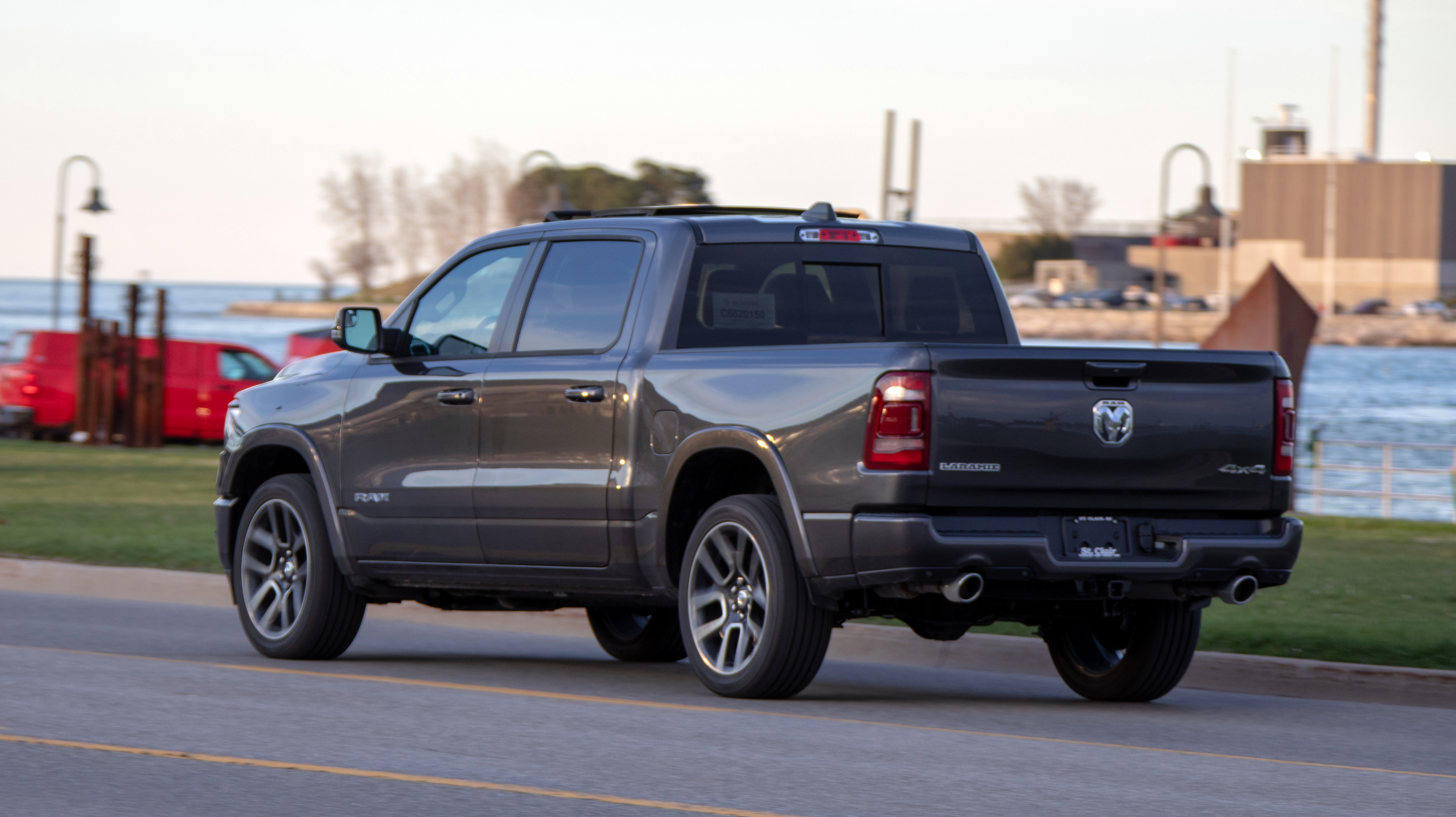
For those who are audiophiles, the fourth-generation Crew Cab offers a 750-Watt Harman Kardon audio system with 17-speakers and an 8-inch subwoofer that sounds amazing. The subwoofer sits under the rear seat and offers the perfect amount of bass and clarity. The fifth-generation Crew Cab offers a 900-Watt Harman Kardon audio system with 19-speakers and a 10-inch subwoofer. While the larger system in fifth-generation rocks, the location of the subwoofer against the back of the cab rattles the rear of the cab at the signs of any bass. While more is usually better, there is a huge improvement in the sound quality in the Heavy Duty when compared to the Ram 1500, due to the clarity and the rattles from the cabin.
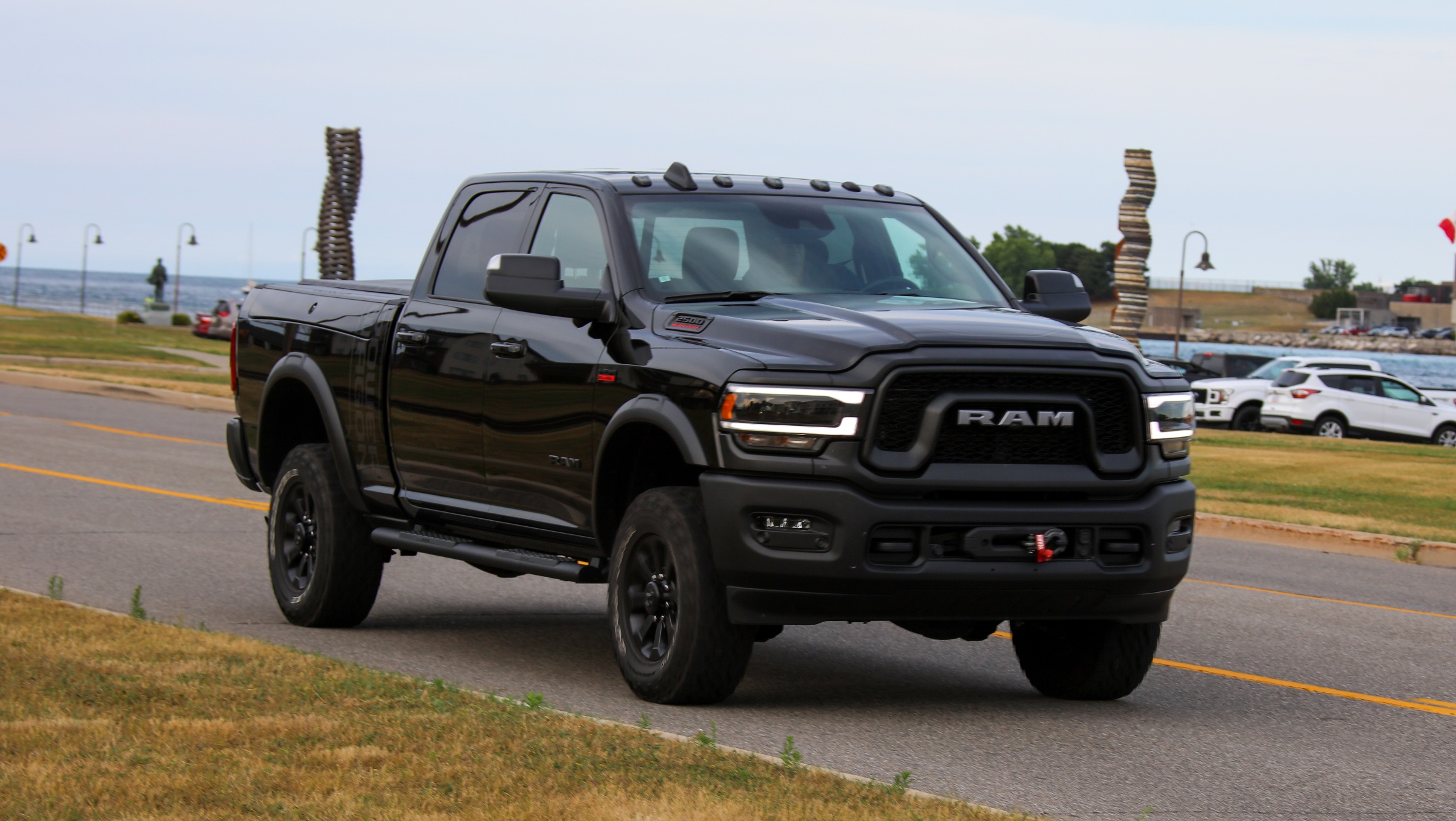
While the fifth-generation cabin is a bit wider, there is more room to lay your arm across the top of the door panel and out the window. The fifth-generation offers a bit more room and with a rounded edge, you can keep your arm more comfortably on the top of the door sill without it falling off. But one of the biggest complaints I get when people ride in my fifth-generation cab is that when you start moving their arms get pinched by the door locks when the truck pulls away and automatically locks. Something that no one complained about with the locks on the fourth-generation Crew Cab.
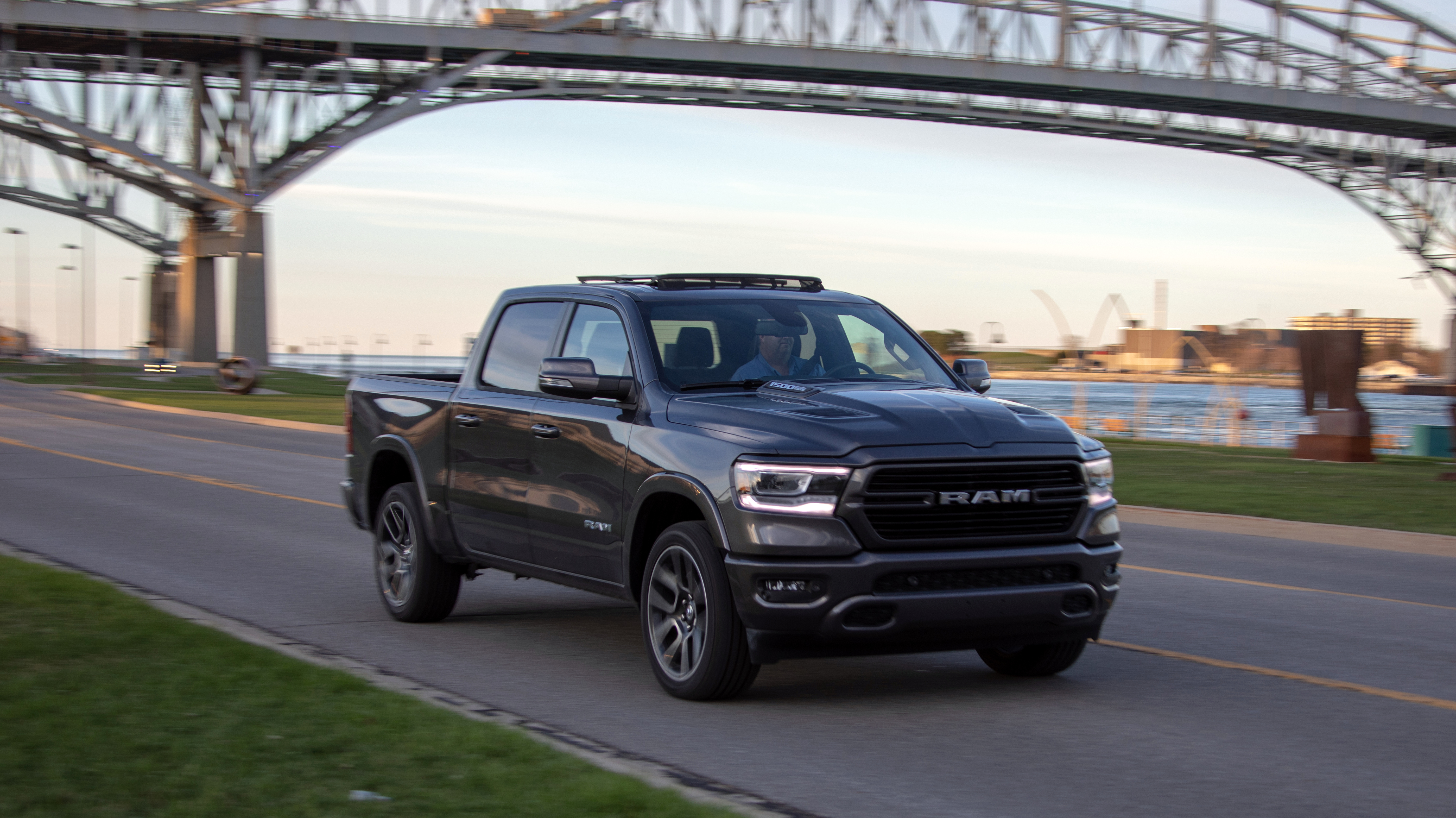
Overall, while the updated Heavy Duty models might not be a fifth-generation model, nor feature a cabin as truly comfortable than the fifth-generation model, the Ram design team did an amazing job updating the Heavy Duty trucks to make them feel like all-new trucks. But because the Heavy Duty trucks are not a fifth-generation model, it doesn’t mean that there aren’t somethings that the fourth-generation-based Heavy Duty pickups can’t do better or even look better doing.

